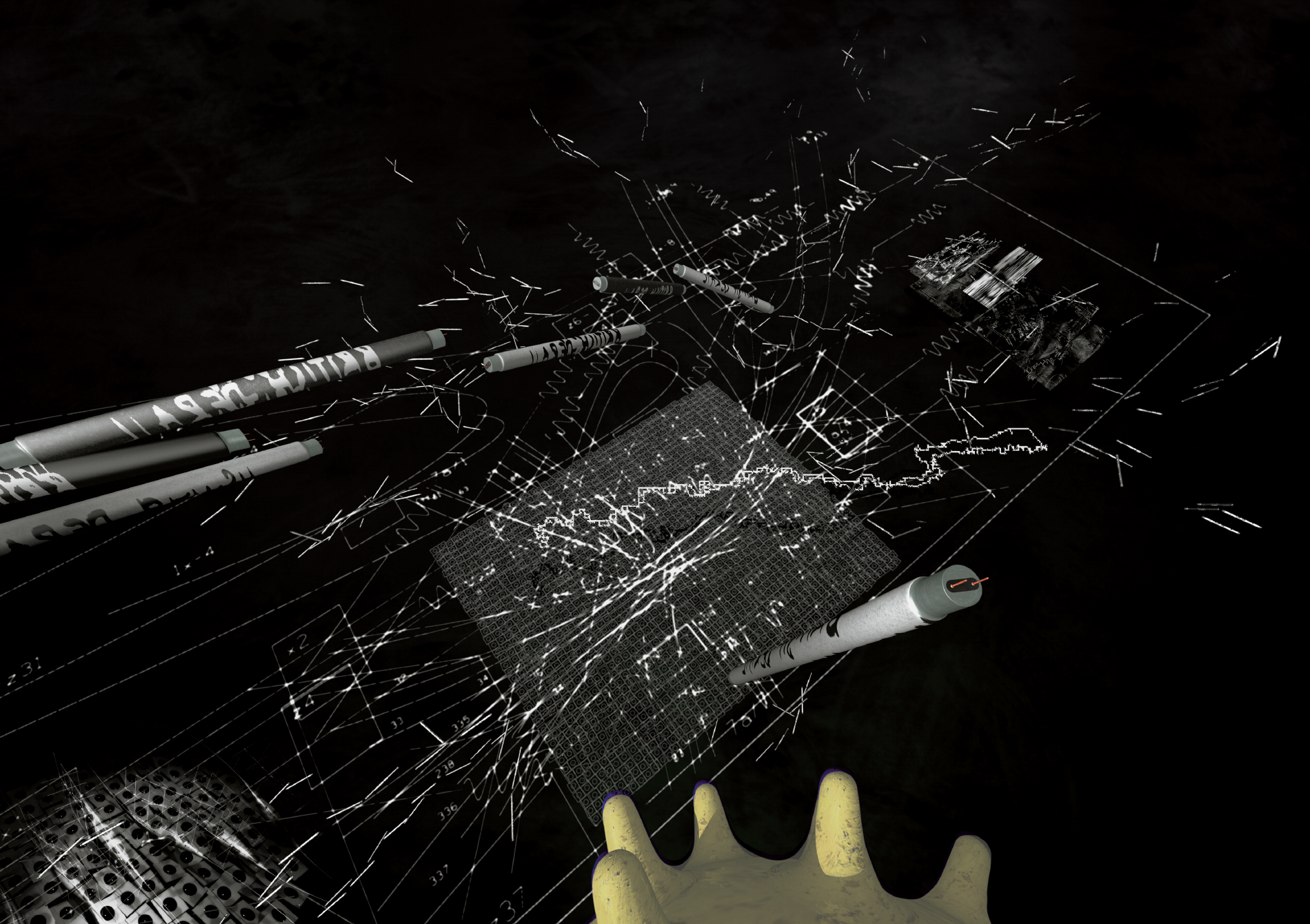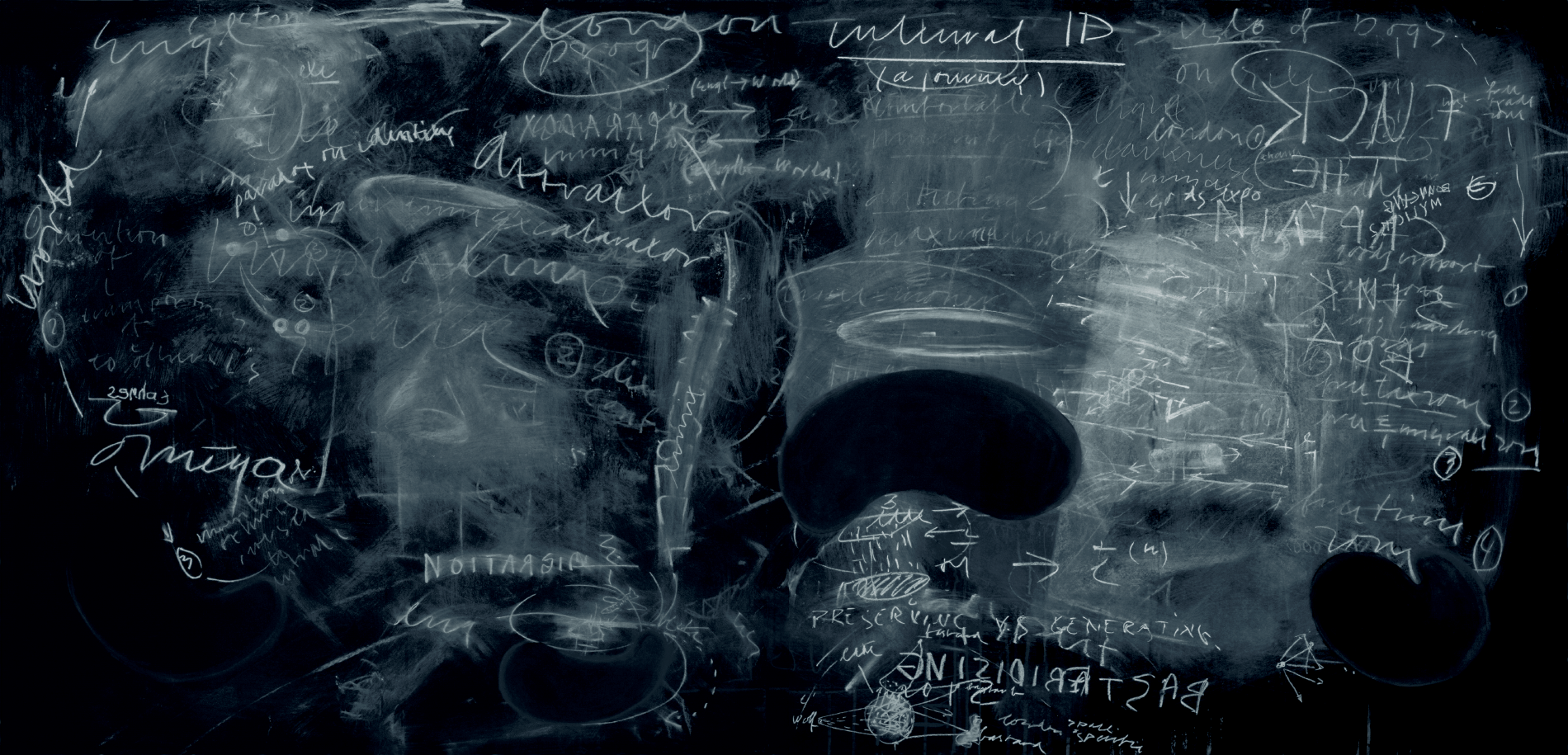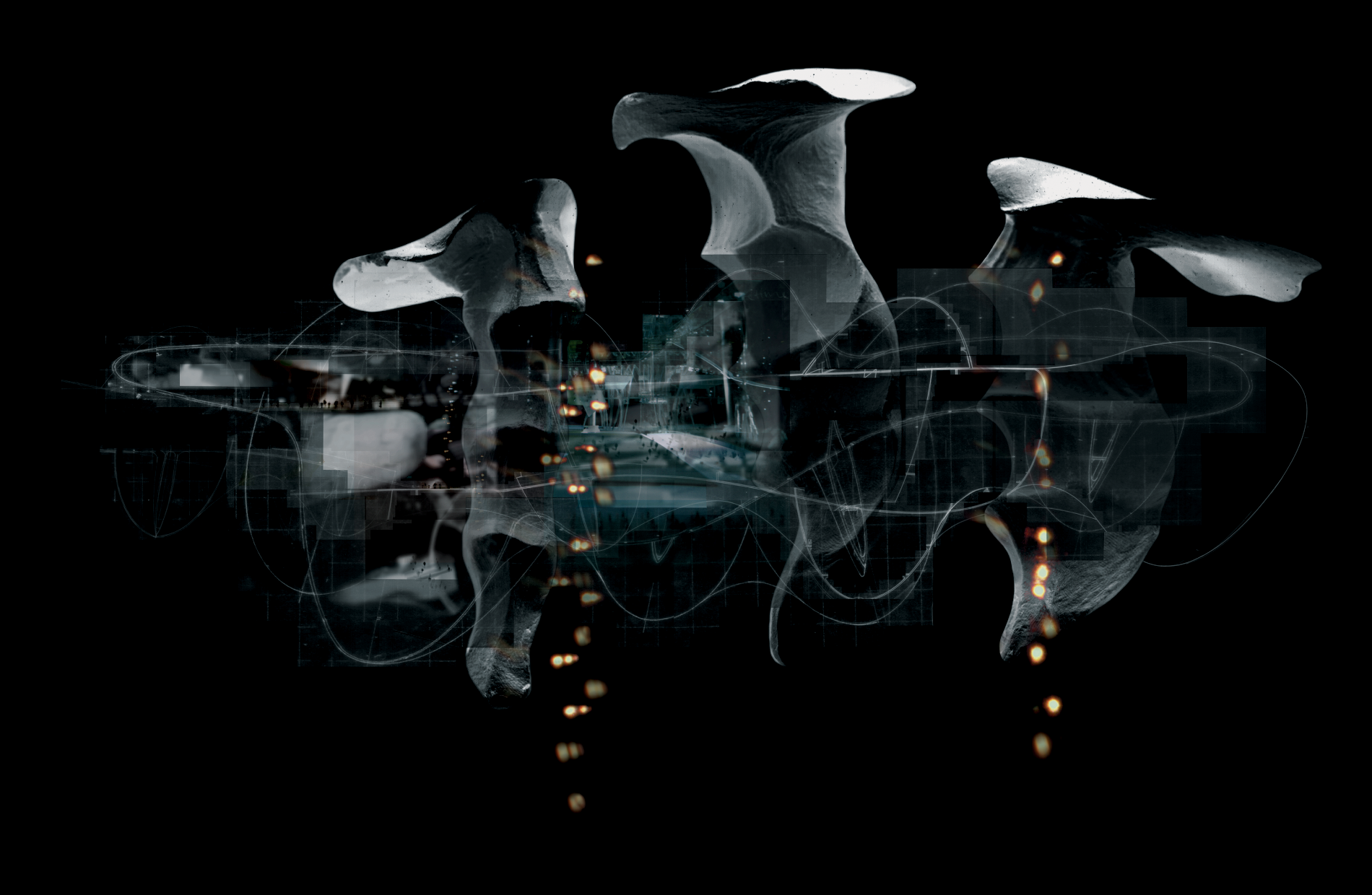Public urban space and the “space” of communication networks are usually seen as frameworks for social interaction, competing or mutually exclusive.
The traditional functions of urban public space are being taken over by telecommunications networks.
The inputs and outputs of their channels are increasingly located in private interior spaces.
Soft Urbanism @ Architect, Magazine for Architecture and Urbanism, 1 June 1997
Public
Media
Urban
Interfaces
Public urban space and the “space” of communication networks are usually seen as frameworks for social interaction, competing or mutually exclusive. The traditional functions of urban outdoor space are being taken over by telecommunications networks. The inputs and outputs of their channels are increasingly located in private interior spaces.
Architects and urban planners tend to blindly reject these developments. The opportunities offered by electronic media are ignored or denied, as media space seems to make public space disappear. On the other hand, supporters of cyberspace nurture all sorts of simplistic expectations, anticipating the relocation of urban functions to the “soft cities” of tomorrow.
These “soft” cities are usually supposed to be democratic. In our view, they are becoming increasingly exclusive in character. Public space is imploding, not only in the urban components, but also in the media. On the agenda is the privatization of spaces belonging to electronic mass media. However, at this turning point, on the threshold of the era when the world (market) is dominated by software giants, there is still plenty of opportunity to establish a more public dimension in communication environments.
The gap between the exclusive immaterial media realms (Internet, television, etc.) and the expanding fragmented suburbs is widening. The polarization between the global and the local space is sharply increasing. Any strategy aimed at enhancing the meaning of public space must therefore engage with at least two categories of audiences: the global and the local. To this end, environments are created in which local and global spaces can merge and interact.

Public
Interfaces
To connect global media reach with local urban content and place, we propose a hybrid architecture with communication spaces that form a new public analog digital infrastructure. These “interfaces” at the interface of public, media and city are publicly accessible interfaces between the global media space and the local urban place.
In this project, called Media Babies, we develop an alternative scenario for the interaction of mass media, which can strengthen the function of public urban space. This scenario emphasizes the role of the public in an increasingly privatized society and it fills the vacuum, which exists between the local and the global. It develops a hybrid urban network space, a fusion of media space with urban space. The products of this union between urban and media networks are bastards: ambivalent spaces that are simultaneously analog and digital, virtual and material, local and global, tactile and abstract.
Hybrid Space Lab represents an interdisciplinary field, exploring the dynamic interaction between urbanism, mass media space and communication networks. The ‘soft’ urbanism that deals with the ‘soft’ aspects of the city not only engages in the field of infrastructure, but also adopts the associated concepts and paradigms. By providing networks, ‘soft’ urbanism creates new possibilities and frameworks for self-organizing processes.

Hybrid
Analog
Digital
Infrastructure
The Media Babies project explores the urban tensions and structure of London. Moreover, strategies are unfolded and aspects of them explained in more detail. The project includes speculations on urban transformation processes and economic strategies. Here, the working hypothesis is tested against the particularities of a specific urban situation. It creates a programmatic framework for the development of architectural tools with which to trace and code these hybrid, analog digital spaces.
Every Media Baby is a local public interface. This tool entices the public to exploit the medium of television. It maximizes its potential spontaneity by kidnapping the audience’s imagination. The name Media Baby represents the germs of communication (environments) as well as the digital community centers (hybrid analog digital environments) from which the Media Babies will broadcast. More than I28 community centers will be distributed across London’s expanding suburbs and interconnected by an ISDN network. In turn, they will feed the eight Bridgeclubs located on the Thames with a continuous stream of (non) events. The Media Baby in the community center consists of a reception meadow, two introductory rooms, a debutante ball, a connection platform and a short-wave transmitter. The receiving meadow is the area where the public can inspect the transmitting activities of eight other Media Babies and a Bridgeclubs.
Interactive technology allows the public to participate in these broadcasts. There is also the opportunity to make direct contacts, creating smaller networks within the larger network of interfaces between audience, media and city. A Bridgeclub bridges the gap between programs with local distribution and those that deserve a larger audience. It forms the core of a north-south connection connecting eight Media Babies on both sides of the river. The Bridgeclubs are refined and expanded versions of the Media Babies. They provide the space for public events on an urban scale. Additional amenities include the selection platform on which the selection ritual takes place. By utilizing the wider broadcast facilities available at the Bruges Head, the selected programs are experienced and made suitable for a mass hearing. The Bridgeclub should also bridge the programmatic events associated with where the club is situated. For example, Hungerford’s Bridgeclub functions on certain days (and nights) as a debutante ball in relation to nearby Waterloo Station (connection to the Continent). With the widely distributed chip card that makes “airtime available to all,” you can produce and broadcast programs.
In addition, you can take over a message here by giving it extra airtime. In the Media Baby in your own neighborhood, you will find the necessary facilities with which you can create your own program. You can also listen to your program here when it is broadcast. It can also speed up messages by giving them extra airtime using the special chip card. If a message gains momentum, it is more likely to reach a much larger audience, more Media Babies, a bridgehead, the city or the whole country, Europe and the rest of the world. The right to broadcast replaces the right to vote. Once you have produced your program, instant gratification is guaranteed. Then go to the connection platform and see what reactions your program has evoked in the network. On the platform you get a five-dimensional view of the life cycle, joys and woes of your message.

Soft
Urbanism
Architecture is concerned with defining and materializing spaces for social interaction. The design of the relationship tus sen the physical and digital public domains is increasingly challenging. It involves an examination of the relationships between the “soft” city and its limited material opposite, the living environment, speculating on the interfaces between the “virtual” and the material (urban) world and the design and of hybrid (analog digital) communication spaces. Soft urbanism is concerned with the information and communication processes in public space, with the soft aspects that modify urban agglomerations. These invisible networks operate as attractors, transforming the traditional urban structure, cutting through the urban fabric and demanding interfaces. Soft urbanism intervenes in the domain of infrastructure. At the same time, it adopts its concept and follows its paradigm.
By expanding the field of social interaction and revealing new paths for urban development, it guarantees an inherently flexible approach. Softe urbanism conceives of the city as an organic unit, as the “protein chains of networks. Consequently, soft urbanism is not concerned with shaping, inscribing or defining urban places, but with creating frameworks that enable and evoke a wide variety of unpredictable developments. Contemporary urban planning is caught in the dilemma of trying to realize the dream of the omnipotence of planning, but at the same time having to accept its powerlessness in the face of market forces. This leads, on the one hand, to the modernist belief in scientific methods, with which urban phenomena can be defined and controlled, and, on the other hand, to neoliberal positions that give free rein to the interests of privatization and see the dynamics of the market as the only legitimate determinant of urban development.
Faced with the consequences of both positions, soft urbanism develops an alternative strategy, reintroducing programmatic speculations about the public domain into urbanism. These interventions have nothing to do with control and determination, but concern the extension of infrastructures and frameworks for processes of self-organisation. ‘Soft’ strategies are strategies ‘from below’. They do not -as in a ‘top-down’ approach- lay down first the global outcome of the interaction and then the necessary relationships between the elements through which this interaction is established. Simple rules are developed for a set of independent elements. What emerges from the interaction between these elements is uncertain. In line with biological models, these fields, on which plural forces interact, serve as a reservoir for the selection processes required for urban transformations. Using this method, existing reality is extrapolated to expose its possibilities and force creative accelerations. It will leave traces and create paths that are currently unknown. It is about speed and acceleration, but not about controlling its direction. The spores (Babies) will infect different environments by modifying, mutating and transforming them.
Elizabeth Sikiaridi and Frans Vogelaar, 1996
Collaborators Esther Mildenberger, Achim Bode
Support ART+COM GmbH, Berlin (Jörg Jacobs, Dirk Lusebrink)

Under the pavement (piercing the beaches) run fiberglass cables.
related PROJECTS
Today, media networks are influencing and interacting with real places. Information and Communication Technology (ICT) is radically changing the way we live, interact and perceive our world.
Politics, economics, warfare, culture are increasingly taking place in the spaces of information-communication, media networks.
Publication Hybrids @ Interior Wor(l)ds, Umberto Allemandi & C., Torino, Italy, September 2010
Politics, economics, warfare, culture are increasingly taking place in the spaces of information-communication, media networks.
related PRESS
